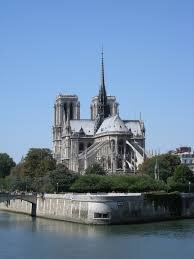What Hemingway Teaches About Wine
Many people know of my great esteem for Hemingway. And at the risk of causing you to choke back half your whiskey into the open pages of The Sun Also Rises, I’ll say that I find him a sensitive, nuanced writer who cares deeply about women. If you ardently disagree, there are plenty of academics and feminists who happily side with you, citing examples of misogyny too numerous to list here. And then of course there’s his macho image, but hear me out when I say that perhaps all the bull fighting, big game hunting, deep sea fishing, boxing, wars et cetera was in an odd way incidental and largely metaphorical. Beneath the surface he was writing about how infinitely complex men and women are, and you don’t have to be a Freudian analysist to see the strong androgynous strain in his stories, the way his men and women blend together, one becoming the other. Long before we had Trans bathroom debates, Hemingway was trying to say that there is a lot of woman in a man and vice versa.
Alas, Hemingway has long gone out of fashion in this country, while wine (the wine he so loved, to say nothing of other spirits) has soared in production and consumption. In the 1970s wine was often described in terms of masculinity and femininity, as well as in the language of gender and class: “A nice little wine, although lacking in breeding.” Jump forward to today and we prefer the language of fruits and vegetables: “Aromas of blackberries, cherries, raspberries.” But note, never: “Lovely bouquet of broccoli and Brussel sprouts.” There are still wines that are forever robustly masculine: Hermitage, Brunello di Montalcino, California Cabernets and Châteauneuf-du-Pape come to mind. As well as those that are distinctly feminine: Chablis, Mosel wines, Pinot Noir in general. But when you tap into your inner Hemingway, and examine that alcoholic, full-bodied, macho Châteauneuf-du-Pape more closely, you’ll notice that beyond the high alcohol is the luscious Grenache masquerading as a sexy French woman.
I thought of titling the column, Hermaphrodite Wines, then thought, perhaps not. Joking aside, when you think about wine in this way (what is manly about it? Tannins? Alcohol? What is feminine about it? Raspberry? Smoothness?) it further stimulates the old couple of brain cells and I’d argue also further increases your enjoyment—or at least ups the ante around your dinner table discussion.
Valle Dell’Acate, Cerasuolo di Vittoria, 2013 (organic) – beautiful example of masculine/feminine. The decidedly macho Nero d’Avola (70%) might have you thinking the wine would be robust. But in this case the woman has the upper hand. Frappato, only 30% of the blend, is known for its raspberry notes, and this is a lighter, more delicate wine, yet one with beautiful structure, backbone and yes, breeding. Perhaps this has less to do with the Frappato and more to do with Gaetana Jacono. Gaetana, who looks more like a runway model out of Milan than a 6th-generation winemaker, is the brains behind this Cerasuolo di Vittoria D.O.C.G., the only D.O.C.G. in Sicily. Look for the Frappato’s raspberry notes, as well as pomegranate, cherry, together with woodsy aromas, and a medium palate with allspice, anise, and red plum.
Kay Pfaltz

